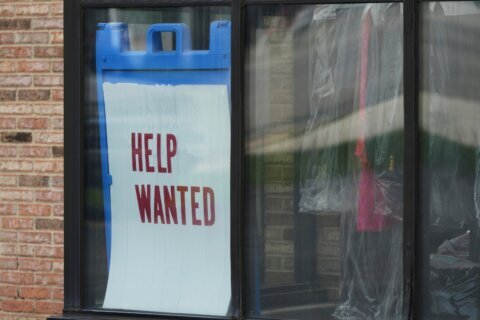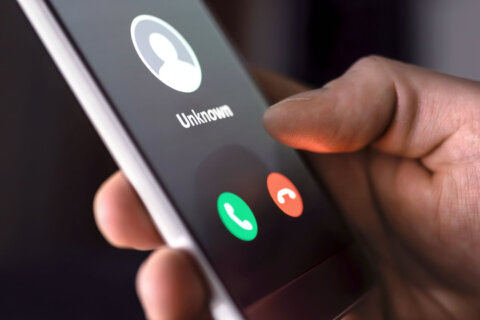The 2021 Atlantic hurricane season officially begins today, and it is forecast to be yet another busy one.
With an active season in mind, Amazon and the Red Cross are hoping a brand new disaster relief hub and partnership will allow for a faster response to locations hit by hurricanes and other natural disasters.
“Our disaster relief and response team is partnering with global humanitarian relief organizations to leverage Amazon’s scale to help improve response time to large-scale natural disasters around the world,” Alicia Boler Davis, vice president of Global Customer Fulfillment at Amazon, said in a news release to CNN.
Amazon is announcing, today, the opening of its Disaster Relief Hub in Georgia to quickly help respond to natural disasters, and its partnership with six global humanitarian aid organizations, including the Red Cross.
Trevor Riggen, senior vice president for Disaster Services with the American Red Cross, says that this new venture blends its own disaster response background with Amazon’s delivery know-how.
“This most recent effort in the disaster relief hub is an opportunity for us (the Red Cross) to leverage their (Amazon’s) expertise in logistics and be able to work with them to get resources just in time to places that are hard to get stuff to,” Riggen said. “Places that are difficult to move resources without a plane, and Amazon has that capability to move things quickly.”
This includes places like Puerto Rico, the US Virgin Islands, Latin America, the Caribbean, and even rural and remote regions of the United States.
The Amazon hub, located in Atlanta, will stock over half a million Amazon-donated relief supplies. There will be enough supplies stocked up to immediately fill an Amazon Air 767 airplane to quickly deliver critical goods to community partners when a disaster strikes.
The program started because of a letter to the former CEO of Amazon.
“Jeff Bezos actually received a letter from somebody in Louisiana in 2016 when floods hit and said, ‘Amazon is the best at getting stuff into the most remote areas of the United States, how can you help us get supplies here?'” said Bettina Stix, director of Disaster Relief at Amazon. “That was really the vision I had. We can reach even the most rural communities, we have transportation methods to get there.”
After a natural disaster, emergency teams assess what supplies they have, procure items they need and then consolidate, pack, and ship supplies into disaster zones. This process can take several days. To shorten the procedure, Amazon studied its disaster support data across four years and formed a strategy.
Location is everything
The organizations chose the Atlanta location due to its close proximity to the areas most often hit by hurricanes. Atlanta, for example, is just 300 miles from the Gulf Coast, around 700 miles from the Bahamas, and within 1,500 miles of Puerto Rico and other Caribbean islands.
In the US, rural locations can pose problems when roads get washed away. Southwest Louisiana was hit multiple times last year by different tropical systems. During Hurricane Sally last year the Pensacola Bay Bridge was heavily damaged, limiting not only people trying to evacuate out, but aid from getting in.
In the Caribbean, many islands can be difficult to reach right after a disaster hits, making planes the only accessible way to get in.
“Since 2017 we’ve had hurricane Maria, Irma, Dorian, they all hit islands, and as we know, the crucial way to get in there is by airplane, that’s the fastest way,” Stix said.
Not only did all of those hurricanes hit islands, but all reached Category 5 strength, the highest level possible for a tropical cyclone. Hurricane Dorian was uniquely devastating.
“Not only was it one of the strongest on record in the Atlantic basin, but it was stationary — or nearly stationary — over the Bahamas for more than 24 hours as a Category 4-5 storm,” said Taylor Ward, a CNN meteorologist. “This made for one of the worst natural disasters in the country’s history. The extreme strength devastated the area and the slow movement delayed humanitarian relief from arriving.”
The hope is that if a similar disaster occurs, precious time won’t be lost from locating, sorting and packing the relief items.
Forecast calls for another active hurricane season
This year could see the sixth consecutive above average hurricane season, according to the National Oceanic and Atmospheric Administration (NOAA). This year also marked the seventh year in a row that at least one named tropical system has formed in the Atlantic prior to the official start of the season.
“We do prepare every year as if it is going to be a very busy disaster season, but when we see these forecasts with almost a guarantee that there is going to be an above average amount of activity, that tells us that we’re going to be busy all summer and into the fall,” Riggen said.
“A lot of pre-planning goes into a busy season like this to make sure regardless of the level of activity that we’ve got enough resources and we’re able to move those just in time,” he said.
Since its inception in 2017, Amazon’s disaster relief and response efforts have provided over 13 million items, and tens of millions of dollars to support community partners worldwide during 59 separate natural disasters, according to Amazon.
How to prepare for the unknown
There’s three phases that the Red Cross goes through during an operation: the what, where and when.
“People don’t always need the cleanup supplies minute one, they need the relief supplies, they need to make sure they can keep their family safe, that they have food, and water right after the storm. That’s the what,” Riggen said.
Then there’s the where … where are the people? You have to take into account that some people move to a shelter, stay with family members, or in some cases an entire community is evacuated to a neighboring community. So those supplies need to go to where people are after the disaster, not before.
There’s also another factor to consider — connectivity. People want WiFi connections and the ability to use their cell phones. Not just the people who live in those communities affected by the storms, but also the first responders, and aid workers.
The ability to communicate with your loved ones, to tell them that you are OK after disaster strikes, or the ability of responders to communicate with the communities and with each other, is critical.
The Amazon Web Services (AWS) Disaster Response Program — which tracks global disasters — will also partner with organizations like Help. NGO and Information Technology Disaster Resource Center (ITDRC) by helping people access critical data locally. The AWS and ITDRC will show up to a disaster scene with generators, satellite dishes, wi-fi repeaters and miles of cable.
These volunteers work to establish temporary connectivity when the power is out and there are zero bars of cell phone service. At the same time, telecommunications and utility companies can focus on repairing the permanent infrastructure.
Food, water and shelter are essential for disaster recovery, but the ability to distribute those essentials relies heavily on good communication.
About 30% of all Atlantic hurricanes make US landfall. However, you don’t need to have all of the forecast storms make landfall in the US for it to be a destructive season.
“It doesn’t matter if there’s 30 storms or one … if it impacts you, it’s a busy season,” said Ken Graham, director of the National Hurricane Center.
If that one strikes, this partnership may help lessen the inevitable disruption an unwelcome system from the tropics brings.







